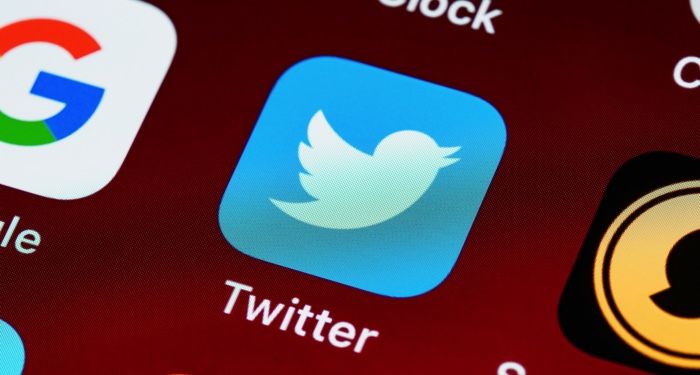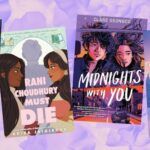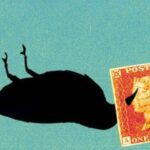
What is Twitterature? An Introduction to the Genre
The word Twitterature seems self-explanatory, right? It’s literature on Twitter. But, what does that mean, exactly? What counts as Twitterature and what doesn’t? Here’s a brief look at the genre with some examples for your reading pleasure, too!
What is Twitterature?
It turns out Twitterature can mean a lot of things, so long as it’s literature of some kind being created and shared on Twitter. Sometimes this means poetry or one-Tweet short stories. Sometimes, this can mean entire novels shared over the course of hundreds or thousands of Tweets. New terminology has been created to describe the different versions of Twitterature: Tweetfic, twillers, twiction, and more!
One-Tweet Short Stories
I think one-tweet short stories are what you’d immediately think of when you hear Twitterature. It’s like it sounds: writing a story in the confines of one Tweet. They started as 140 characters in the early years of the genre, but with Twitter’s expanded twitter limit, many now use 280 characters.
The account @veryshortstory, for example, has been Tweeting out one-tweet fiction since 2009, and many users have taken the #vss (very short story) to share their own attempts at the medium.
@sixwords Tweets out six-word memoirs, occasionally compiling them into books. They’re on their 10th book of six-word memoirs now and show no signs of stopping. According to their website, over 5,000 teachers have used the format as an exercise in their classrooms. If you want to try your hand at a six-word memoir, you can submit to them, too!
Another author, @arjunbasu, had one of his “Twisters”, what he calls his 140-character stories, turned into a short film in 2009! Here’s another of his Twisters:
Serialized Short Stories
Some authors have used Twitter to share short stories across a great many Tweets, spacing them out over months or even years. The great thing about Twitter? You can pick it up and tap out a Tweet in just a few minutes, maybe while you’re waiting for the microwave to ding or in between meetings.
Philip Pullman, author of His Dark Materials, took to Twitter to share the story of his house’s resident fly he named Jeffrey. At first, he was just Tweeting about what the real-life fly was doing, but after the fly disappeared, Pullman wrote an obituary. Fans of Jeffrey, however, were saddened by his loss, so Pullman “brought him back to life.” Thus began the fictional life of Jeffrey the fly.
Interactive Twitter Fiction
For some authors, the interactive aspect of Twitter proves a new way to write stories. Writers will write the first sentence or, like pick-your-pathway stories, will give readers the ability to vote on what comes next. Neil Gaiman, for example, Tweeted the first sentence of what would become Hearts, Keys, and Puppetry. To finish the story, anyone could Tweet what came next and have their idea make it into the final story. The audiobook of the completed novel went on to win the AudioFiles Earphones Award in 2011 and was an Audies finalist in the same year.
Teju Cole, author of Open City and Every Day is for the Thief, created a short story called “Hafiz” out of retweeting other’s posts. In isolation, the Tweets weren’t connected, posted by different people at different times, but Cole’s retweeting them in a specific order created a narrative!
David Mitchell, author of Cloud Atlas, also tried his hand at Tweeting out a short story. “The Right Sort” was published in bursts of Tweets. They were later compiled into a collection of Tweets by @SceptreBooks where you can still read the story in chronological order.
Twitter Novels
Twitterature isn’t just one-tweet stories. Many authors have taken to the platform to tweet out entire novels, one Tweet at a time.
The first Twitter novels, both Tweeted in 2007 and 2008, are said to be Small Places by Nicholas Belardes and The Good Captain by Jay Bushman. Small Places took two years to complete, landing at around 30,000 words in total as Belardes told the story of mundane, corporate life of a man in California. The Good Captain, a sci-fi retelling of Herman Melville’s “Benito Cereno” was originally tweeted from November 2007 through February 2008 and was then compiled into an ebook.
Other authors like Jennifer Egan and her story Black Box, Bob Blechman’s Executive Severance, and Matt Richtel’s “Twiller” used the platform to share their longer fiction, a few sentences at a time.
Retellings and Classic Lit
Similar to the serialized email newsletter that has been sending out Dracula daily, some people have chosen to take old classics and put them in front of a modern audience by using Twitter.
Chindu Sreedharan of the account @epicretold, retold The Mahabharata over the span of more than 2,000 tweets and 1.8 million words over the span of a few years! The retelling was later published as Epic Retold: The Mahabharata in Tweets.
Romeo and Juliet, too, got the “Twitter treatment” when the Royal Shakespeare Company shared a retelling of the classic story over the span of 4,000 tweets in 2010.
Others have taken to Twitter to tweet the Exodus, add a fictional spin to classic stories, or put modern slang where it’s never been before.
The Twitter Bots of Fiction
Some bots have joined in the barrage of fiction writers on Twitter, spitting out scenes or lines from different genres. @Magicrealismbot, for example, tweets out a few lines of magical realism, often nonsensical and ethereal.
Others with their own take on the premise include @mythologybot, @poem.exe, and @happyendingbot to name a few.
As you can see, there is quite a bit of things included in Twitterature. Some even say fan accounts that tweet from the perspective of fictional characters count as part of the genre. The possibilities are endless!
If you’re interested in other niche genres of literature, check out this guide to digital literature or this exploration of horror sub-genres.




